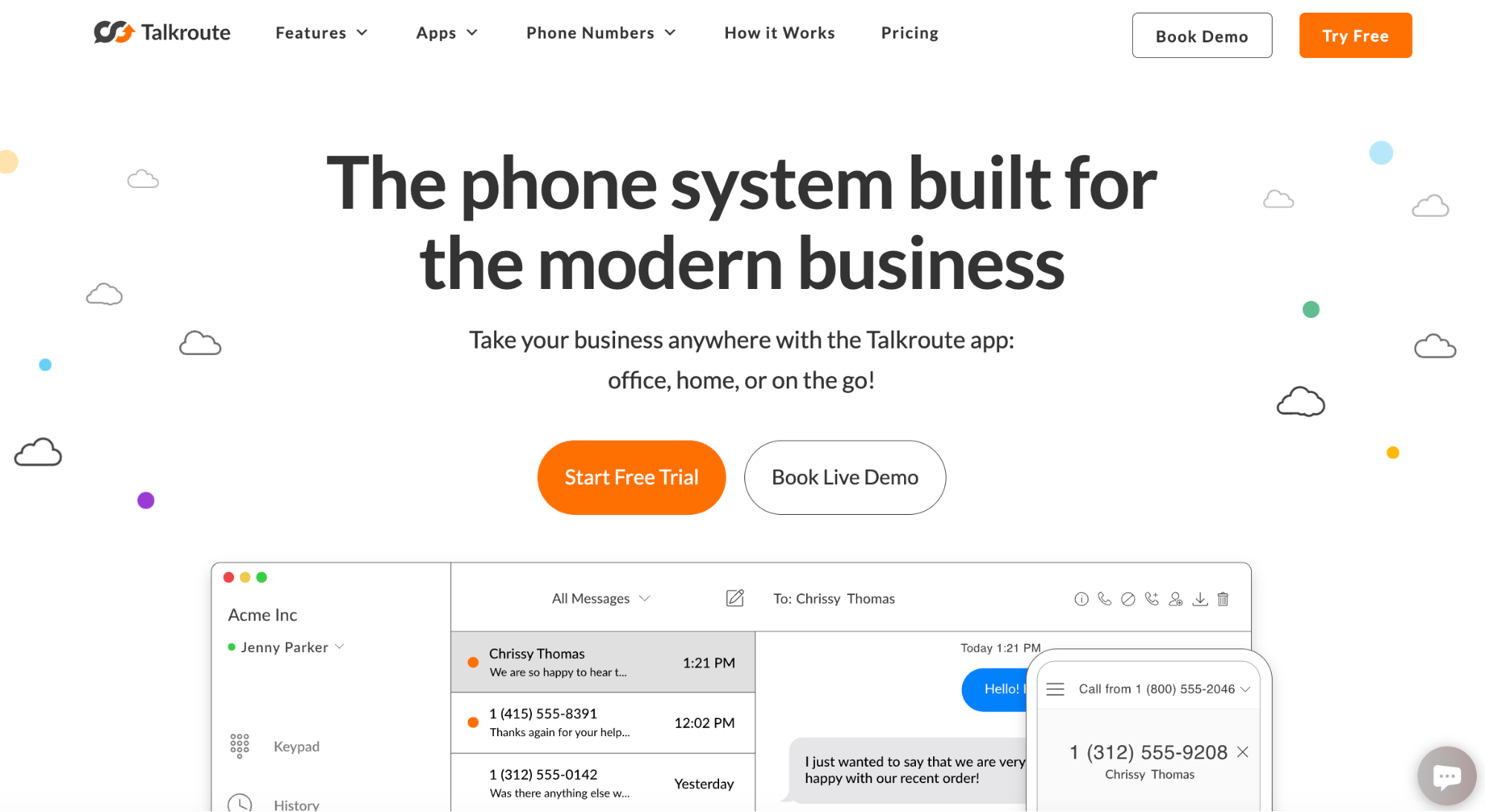Communication can get messy fast. Messages get lost, replies come late, and team members miss important updates. When everyone uses different tools or isn’t sure where to look, it leads to confusion and delays.
That’s why choosing the right communication channels matters. The tools your team uses to talk, share updates, and stay in sync can make or break your daily workflow.
In this article, we’ll go over 10 communication channels every team should know. Each one plays a different role in helping your business stay connected, whether you’re in the office or working from different locations.
What Are Communication Channels?
Communication channels are the ways we talk and share information. These can be face-to-face conversations, phone calls, emails, text messages, or video calls.
Businesses use many channels of communication to stay in touch with customers, teams, and partners.
Some people like quick messages, while others prefer more formal emails. This is why it helps to offer different channels.
When people have options, they can choose their preferred channels based on what makes them feel most comfortable.
There are also many other communication channels beyond the usual ones. Think about live chat, social media, or mobile apps. Top communication channels use the same technology that people already know, so they feel easy and natural to use.
Use one platform for all your business calling needs. Watch how Talkroute works.
How Do Businesses Benefit from Communication Channels?
Good communication helps a business grow and build strong relationships. Using the right channels can make things easier for both customers and employees. Here’s how:
Better Customer Interactions
Using the right communication channels helps businesses connect with people in a more personal way.
Whether it’s a quick message or a phone call, clear and friendly customer interactions make people feel valued. When customers can ask questions and get quick answers, they’re more likely to stay loyal.
Meeting Customer Expectations
Customers expect to reach out and get a reply fast. They want to use the preferred channels they already know, like email, live chat, or even social media.
By offering these options, businesses show they’re easy to work with and ready to meet modern customer expectations without making people wait or jump through hoops.
Higher Employee Engagement
Employees want to feel like their voices matter. When communication flows well inside a company, teams stay updated and work better together.
Using tools that make it easy to share updates and give feedback helps build stronger teams. This kind of support leads to better employee engagement and makes people feel more connected to their work.
Less Customer Dissatisfaction
When communication is slow or confusing, people get frustrated. Long wait times, missed messages, or unclear answers can lead to customer dissatisfaction.
Having open and easy channels helps solve problems faster. When customers feel heard and helped, they’re more likely to stay happy and keep coming back.
Easier Content Sharing
It’s easier to create engaging content and share it through the right channels. This includes things like product updates, company news, or helpful tips.
When your message is simple and clear, people are more likely to read it, understand it, and take action. Good content keeps your audience interested and informed.
Keep Records for Future Reference
Many communication tools automatically save messages. This helps teams look back at conversations for future reference.
Whether it’s a customer’s past question or a team member’s update, having these records helps avoid confusion. It also makes follow-ups easier and more accurate.
Types of Communication Channels
Businesses use many types of communication channels to stay connected with customers and teams. Each type helps in different ways, depending on the message and the people involved.
Let’s look at the main types of communication channels that most small businesses use every day.
Verbal Communication Channels
Verbal channels involve talking and listening. These are great when you want to build strong relationships, solve a problem fast, or get feedback right away.
They’re used a lot in remote meetings, in-person chats, and even in contact centers where agents talk directly with customers.
Verbal communication feels more personal because you can hear tone and emotion. It helps when things need quick answers or when the topic might be sensitive.
Written Communication Channels
Written communication is all about sharing information using text. It gives you time to think before you respond and creates a record you can go back to later. This is important when sending sensitive information or official updates.
Written channels are often used to send business messages both inside and outside the company. Many teams also rely on written tools for daily check-ins and customer updates, especially when working remotely.
Digital Communication Channels
Digital channels use technology to bring people together. They can include text, voice, video, and even images.
These tools are a mix of written and verbal communication, often used on mobile devices, so teams can stay connected anywhere.
This type of communication makes teamwork easy. You can hold video calls, share updates, or send files, all from one place.
Many businesses also use digital channels to connect with customers through their company website or external communication channels like social media. Some tools also include features like screen sharing and file sharing, which help teams work together even when they’re not in the same room.
Tools like project management tools such as Trello or Asana make it easier to track tasks and updates across a team.
Set up a professional phone system for your team in minutes. Try Talkroute now.
10 Communication Channel Examples
Below are 10 common communication channels and how each one helps share messages clearly and quickly.
1. Face to Face
Face-to-face meetings are one of the clearest and most personal ways to talk. You can see each other’s faces, body language, and reactions. This helps people feel more connected and builds trust.
This kind of communication is useful when the topic is sensitive, complex, or needs a lot of back-and-forth. It’s also easier to ask questions, share ideas, and solve problems quickly when everyone is in the same room.
While it may not always be possible, especially with remote teams, face-to-face conversations are still one of the best ways to make sure everyone feels heard and understood.
2. Phone Calls
Phone calls are one of the most direct and familiar ways to talk with someone. You can talk in real time, so it’s easy to ask questions, explain things, and fix problems right away.
Many people prefer phone calls because they feel more personal and immediate than an email or a text. You can hear tone and emotion, which helps avoid confusion and keeps the conversation clear.
Phone calls are especially helpful when you want to follow up with a customer, check in with a teammate, or handle something that needs quick attention. For small businesses, this kind of verbal communication helps build trust and keeps things moving.
If your team works in different places, business phone systems like Talkroute make phone communication easier. With Talkroute’s call forwarding and routing features, you can send incoming calls to any phone. This includes landlines, mobile phones, softphones, or even desktop computers.
You can also set custom schedules, ring multiple devices at the same time, and choose where calls go based on the day or time. This lets you take business calls whether you’re at home, in the office, or on the go.
Talkroute gives your team the freedom to stay connected without needing extra equipment. It helps you answer calls quickly and keeps communication smooth across your business.
Centralize business calls with one communication system. Book a demo with Talkroute today!
3. Email
Email is one of the most widely used communication tools in business. It’s great for sending updates, sharing files, giving instructions, or keeping a written record of important messages.
People use email for both formal and casual conversations, and it works well whether you’re talking to one person or a whole team.
Email is especially useful when you don’t need an instant reply. It gives the other person time to read, think, and respond carefully. Since emails can be saved and searched later, they’re also helpful for tracking conversations and following up.
Whether it’s customer service, team updates, or official notices, email is a reliable way to share clear and organized information.
4. Video Conferencing
Video conferencing lets people meet face to face, even if they are in different places. It combines voice and video, which helps people feel more connected than just a phone call.
This type of communication is perfect for team check-ins, client meetings, interviews, and training sessions.
It is especially useful for remote meetings, where people need to talk clearly and see each other without being in the same room.
Video calls make it easier to share ideas, show reactions, and build trust. You can use screen sharing to go over slides, show files, or explain things visually. This helps everyone stay on the same page and avoid confusion.
Talkroute offers a simple and powerful meetings feature that supports up to 100 participants. Whether you’re working from home, the office, or traveling, Talkroute lets you host or join video meetings from any device.
You can chat during the meeting, share your screen, and even use tools like a whiteboard or file sharing. It’s a great way to keep your team connected and make every meeting more productive.
5. Instant Messaging Platforms
Instant messaging platforms let teams talk in real time using short, quick messages. These tools simplify conversational communication within a company and are great for daily check-ins, quick questions, and group chats.
They help keep conversations moving without the delay of emails or the formality of meetings. Teams can stay connected throughout the day, even when they are working from different places.
Platforms like Slack, Microsoft Teams, and others allow users to create channels for different topics, share files, and tag team members when something needs attention.
It’s a fast and easy way to keep everyone in the loop. These tools also save message history, so you can look back if you forget something or need to find past info.
Instant messaging is a good choice for small businesses that want to stay flexible and make decisions quickly. It works well for both casual chats and more focused conversations, all in one place.
6. Social Media Apps
Social media apps help businesses connect with customers in a fast and public way. Platforms like Facebook, Instagram, LinkedIn, and X let you share updates, answer questions, and join conversations where your audience already spends time.
These apps are often used for marketing, customer service, and brand awareness. You can use social media to post news, respond to comments, and even handle support requests.
It also gives businesses a chance to listen to feedback and learn what people are saying about their brand.
For small businesses, social media apps are useful external communication channels. They let you reach more people without needing a big budget.
7. Voicemail
Voicemail lets people leave a message when no one can answer the phone. It helps keep communication going, even outside of business hours or when your team is busy.
Voicemail is useful for short updates, call-back requests, or messages that need a personal reply. It also helps make sure you don’t miss anything important.
For small businesses, voicemail is a helpful tool for staying organized and responding to calls on your own time. It gives customers a way to leave details, so you know exactly what they need before calling back.
Talkroute makes business voicemail even easier to manage. With Talkroute’s voicemail feature, you can check messages from your email, web browser, or the Talkroute app on your computer or phone.
You’ll get instant notifications when a new message arrives, along with the caller’s info and a written transcription.
You can also create separate mailboxes for different team members or departments, and even set up after-hours voicemail options.
With Talkroute, voicemail becomes simple to use, easy to track, and always within reach.
8. SMS Text Messaging
SMS messages are a fast and easy way to reach people on their phones. They’re great for short updates, reminders, confirmations, or quick replies.
Many customers like texting because it feels personal and doesn’t take much time. It’s also a good way to follow up with leads, answer simple questions, or send out important alerts.
For small businesses, SMS helps keep things moving without needing a phone call or email. It works well for customer service, marketing, and even internal team updates.
Talkroute gives you the power to send and receive SMS messages using your business phone number. With Talkroute’s text messaging feature, you can manage messages from your computer, smartphone, or web browser.
You’ll also get tools like text-to-email alerts, so you never miss an incoming message. Talkroute supports texting on both local and toll-free numbers, and you can control who on your team has access to specific message threads.
9. Live Chat
Live chat is a fast and easy way to talk with customers directly on your website. It lets people ask questions and get help right away without needing to call or wait for an email reply.
This makes live chat a great tool for answering product questions, solving issues, or helping people make decisions while they’re still browsing.
Customers like live chat because it feels quick and convenient. For businesses, it’s an easy way to reduce missed sales and provide better support. You can also save chat history for future use, which helps your team stay on top of follow-ups.
Live chat works well for small businesses that want to give customers fast service while keeping things simple and personal. It shows people that you’re available and ready to help.
10. Newsletters
Newsletters are a simple way to keep in touch with customers and share helpful information. They are usually sent by email and can include news, tips, special offers, or important company updates.
A good newsletter keeps your audience informed and reminds them of your business in a friendly, non-pushy way.
You can use newsletters to highlight new products, share upcoming events, or give a behind-the-scenes look at your team. They are also a good place to answer common questions or link to useful content on your website.
For small businesses, newsletters are a straightforward way to stay connected with customers and build long-term relationships.
Recommended reading:
Virtual Live Receptionist for Small Business Owners (Top 5 Picks)
VoIP vs Landline: Which Option Is Right for You?
Make Talkroute Your All-In-One Communication Channel

Talkroute gives your business one place to call, text, meet, and message. No more switching between apps or devices. Everything you need to stay in touch with customers and your team is in one spot.
You can use Talkroute on your desktop, laptop, or smartphone. It works on Mac, Windows, Linux, iOS, Android, and in your browser. Whether you’re at your desk or on the go, you can answer calls, reply to texts, and join meetings with just a few clicks.
Use your business number to call or text from any device. Share files, screen share in meetings, or check voicemail on the move. It’s simple, fast, and made for real business use.
One app. One number. One place to talk to everyone. That’s Talkroute.
Create a single, reliable channel for all your business calls. Sign up today!
FAQs About Communication Channels
What are the 5 communication channels?
The five main communication channels in business communication are face-to-face communication, phone calls, written communication channels like emails and internal newsletters, video conferencing, and instant messaging platforms.
Each one supports different communication needs, from quick check-ins to detailed discussions.
Choosing the right communication channels depends on the message, the target audience, and whether you’re dealing with internal communication channels or external stakeholders.
What are the 7 major forms of communication?
The 7 major forms of communication include verbal, nonverbal, written, visual, electronic, face-to-face communication, and social media platforms.
These forms help teams connect across multiple channels, whether for internal communications, customer communication, or project management.
Picking the most effective communication channels helps teams stay on the same page, especially with remote employees and external communications.
What are the 7 elements of a communication channel?
The 7 elements of communication channel include the sender, receiver, message, medium, feedback, context, and noise.
These work together to support efficient communication across internal channels and external communications.
Whether you use messaging platforms, video calls, or phone systems, these elements help keep workplace communication clear and build customer trust.
What is meant by a communication channel?
A communication channel is the way a message travels from sender to receiver, through phone calls, text messages, instant messaging, or video meetings.
Businesses use different communication channels to fit the situation, like using video conference calls for virtual meetings or messaging platforms for quick updates.
The key is picking appropriate communication channels that match your communication strategy and meet your intended audience’s expectations.

Stephanie
Stephanie is the Marketing Director at Talkroute and has been featured in Forbes, Inc, and Entrepreneur as a leading authority on business and telecommunications.
Stephanie is also the chief editor and contributing author for the Talkroute blog helping more than 200k entrepreneurs to start, run, and grow their businesses.




